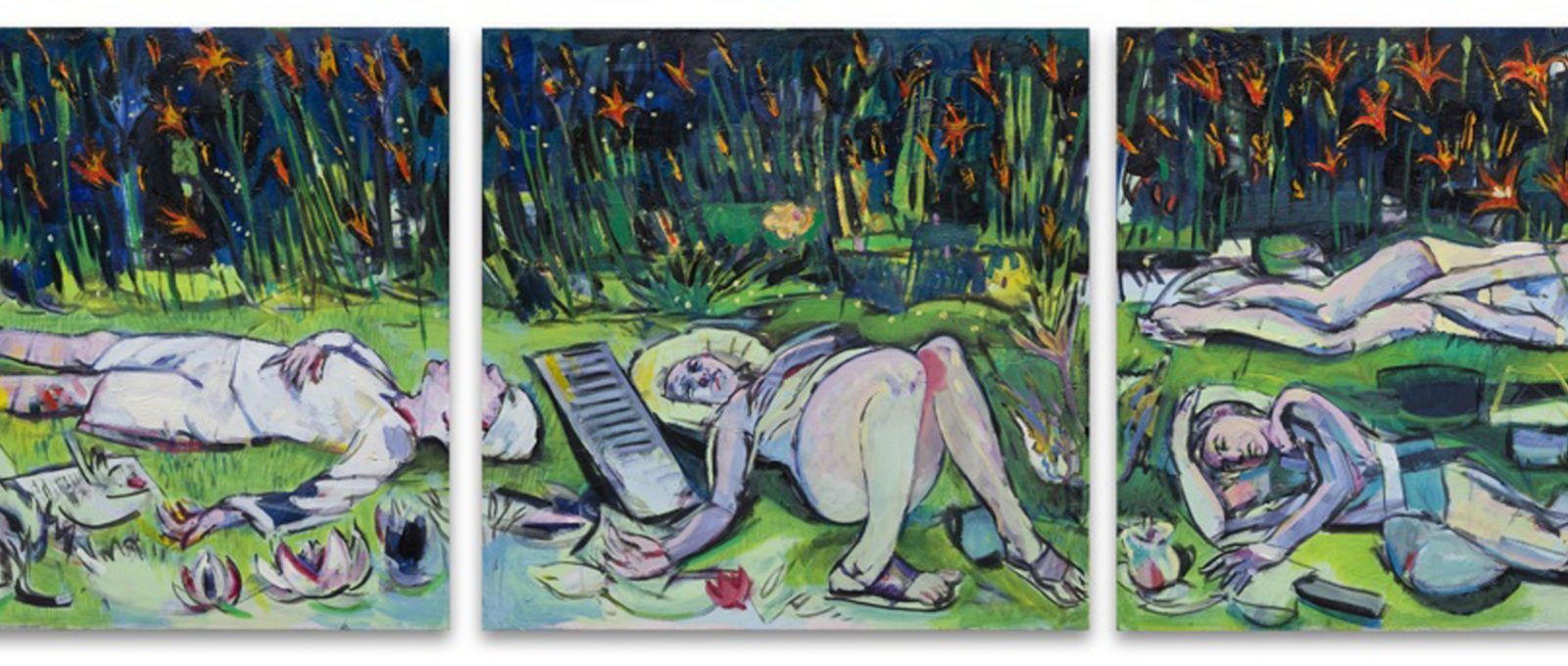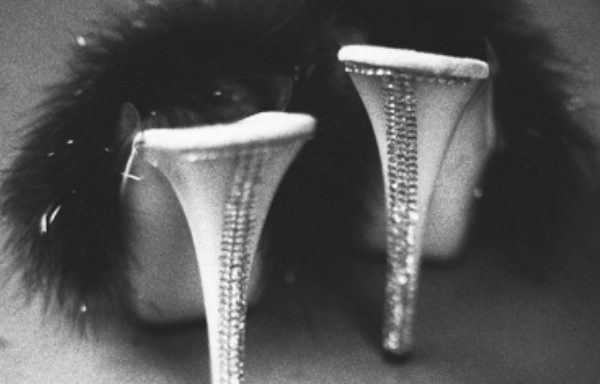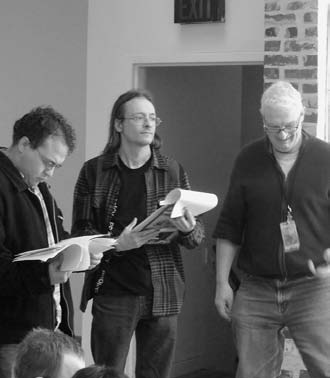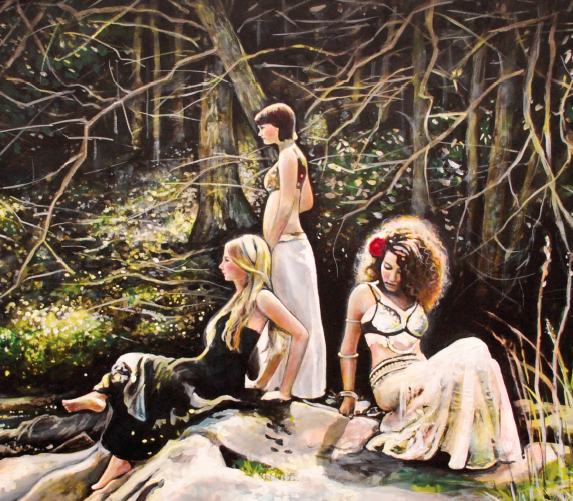by Tif Robinette
This article was originally published in the third issue of VIA Noke Magazine, printed in Roanoke, Virginia in October 2012.
Art Rat Studios, located in a sprawling Southeast Roanoke industrial complex, is home to visual artists Ralph Eaton and Brian Counihan. Both are community organizers, responsible for high-impact arts endeavors, including the annual Marginal Arts Festival. When I ventured over to their space on “the other side of the tracks”, both guys were busy in their adjoining studios. Brian had just shelved two massive paper-mache human puppet heads and Ralph was stabilizing a rod work archway entwined in neon swaths of material.

TIF: Brian, could you tell me about the work you are making?
BRIAN: I’m trying to work towards more veiled portraits, with drawing and painting together. I am also going to work on a large woodcut out of those paintings.
TIF: You’ve also been making large paper-mache heads that you wear…
BRIAN: Yes, I was envious of Ralph’s big [Marginal Arts Parade] floats, and I chose to make two snobby aristocrats.
RALPH: What was title, again?
BRIAN: Art is Revolting!
TIF: Ha, a double entendre?
BRIAN: They have a snarling expression like there is a bad smell.
TIF: So, how do you see your studio work and Marginal Arts Festival intersecting, do you make art specifically out of that interaction?
BRIAN: I see my work as being a part of community involvement, even my portraits are interactive for those that sit for them. The carnival theme of Marginal Arts Festival influences my work.
TIF: Ralph, what are you up to in the studio?
RALPH: Since I’ve gotten this studio my work has gotten bigger. Wherever I’ve worked dictates the work I might do, scale-wise, and in my so-called career I’ve had four studios and this is the best one yet. I’m working on doing a big installation project for an upcoming show at Roanoke College.

“Orange Anchor,” Ralph Eaton; stuffed animals, paint, artificial flowers, steel, glue, thread. 
Fuzzy White Wall Sculpture, Ralph Eaton; stuffed animals, steel, thread, glue. 
“Herd,” Ralph Eaton. Stuffed animals, steel, astroturf, paint, glue, thread.
TIF: Can you talk about your education?
RALPH: I started out as a painting major at the San Fransisco Art Institute, but I very quickly realized I was more of a sculptor. Paintings were more like objects to me, rather than windows to another world.
TIF: Tell me about your work for the Marginal Arts Festival parade and how your work building parade floats professionally intersects with your art making?
RALPH: I did make floats professionally for about ten years for the Rose Parade. It was one of the best jobs I ever had in my life. Specifically, I was a rod worker, or, in the industry, called a ‘rod god’ or a ‘rod jockey’. There’s not many of them. It’s a great fabrication technique. I use the float building process in all my sculptures, using rod work. It can be made very large and still fairly light. Since I moved back here, because I had parade experience, I became in charge of the MAF parade. It seems like people have fun with it. The parade depends on the community. Come on out and do anything you want to do! I would love to see more people build big floats and more crazy machines!

TIF: Brian, could you talk about your role as a community builder and educator at Community High School?
BRIAN: I went to an art school in Ireland. Non-stop in the studio, with only one day focused on archeology or history. It was a very British system. I then went to New York, and lived there for nine years. Being in New York seemed to be education enough, so I didn’t go back to school there. I found I needed more of a context for my own work eventually, and chose humanities direction rather than one in visual art. I was really more interested in the arguments about what post modernity is, and understanding what it meant, rather than having a professor point at a painting and say, “Well, that’s post-modern”. I needed language to explain it. Coming out of that experience, I found I was interested in taking abstract ideas and finding language to contextualize it. I don’t think it really helped my art be any better, but it did help me communicate about art.
All this led me to my interest in teaching. I taught as an adjunct for several years, and then came into Community High School as a founding faculty member teaching humanities. Having the opportunity to change high school learning, to have a blank slate, was very exciting. We developed a curriculum based around the idea that in order for art to be useful in a high school, art education has to be linked to humanities. Basically, we explore the human condition. We learn it in history, and we learn it in art. We have a stripped down visual arts program teaching painting, drawing, photography, and film, but the focus is on the learning process of how to think independently like artists do. Too often what is taught in art education is just technique and self-expression. If we taught science as a therapy session, it would never prepare a student for college.
The students at Community High are prepared to talk about art. They are taught that art is more than just a physical process of making; it is a conceptual process with visual language. How is art socially relevant? How is art personally relevant? There is an endless set of questions students can ask about art.
Visit Ralph online at ralpheatonprojects.com
Visit Brian online at briancounihan.com




